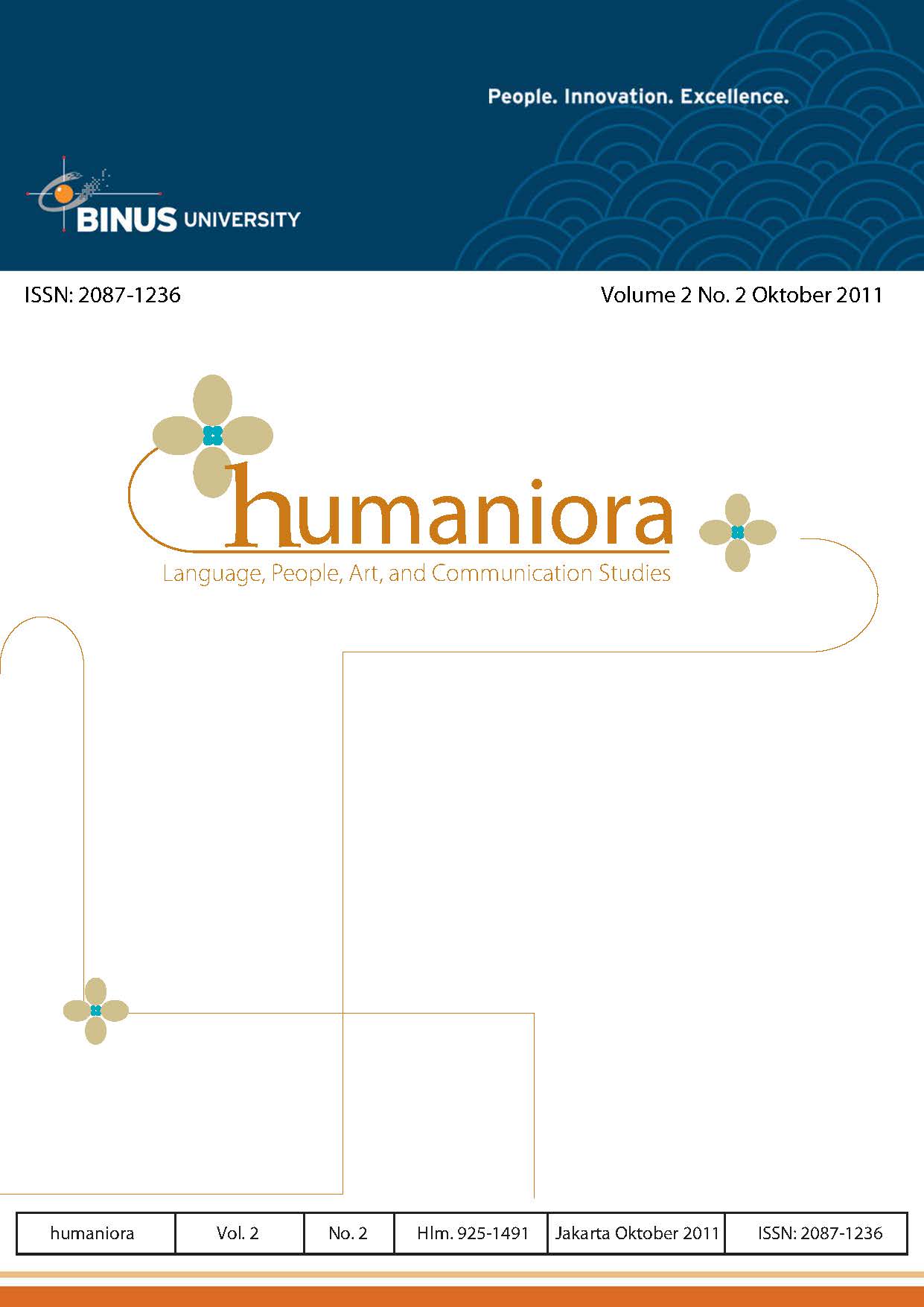Marjinalisasi Perempuan Pertama Melalui Lagu: Suatu Analisis Wacana Kritis Terhadap Lagu “Jadikan Aku Yang Keduaâ€
DOI:
https://doi.org/10.21512/humaniora.v2i2.3149Keywords:
existentialist feminism, post-feminism, marginalization, patriarchal ideologyAbstract
During 2006 until 2007 there were plenty of songs that are lyrical about adultery or polygamy, in line also with the emergence of the phenomenon of polygamy and infidelity by some famous people ranging from businessmen, preachers, politicians, to academics. One of the most popular songs is a song titled “Jadikan Aku yang Keduaâ€. Surprisingly, although the title shows that this song legalized polygamy, the majority of listeners who request the song to be played in radio stations are women. The research reveals about the marginalization of women that is implicitly contained in a song lyrics. The research method used is critical discourse analysis with analytical techniques using the model of Norman Fairclough. This study uses substantive theoretical
framework such as hegemony, ideology, patriarchy, and feminism and the discourse analysis theory from Michael Foucault. The results showed that the Song is a discourse to marginalize women who occupy the first position, while for the second women or femme fatale, this song is empowering them. Song writer has the power to shape the ideology of consumer (listener) toward his patriarchal ideology. He wants to use his power to encourage the women to dare to become a femme fatale.
References
Brooks, A. (2006). Posfeminis & cultural studies: Sebuah pengantar paling komprehensif. Yogyakarta: Jalasutra.
Berger, P. L., & Luckmann, T. (1991). The social construction of reality: A treatise in the sociology of knowledge. Penguin Books.
Cavallaro, D. (2004). Critical and cultural theory: Teori kritis dan teori budaya. Yogyakarta: Niagara.
Croteau, D., & Hoynes, W. (2000). Media society: Industries, image and audience (2nd ed.). California, Thousand Oaks: Pine Forge Press.
Eriyanto. (2005). Analisis wacana: Pengantar analisis teks media. Yogyakarta: LKiS.
Hamad, I. (Januari-April 2005). Membumikan kriteria penelitian. Jurnal Tesis , 34-35.
Irigaray, L. (2005). Aku, kamu, kita: Belajar berbeda. Jakarta: Kepustakaan Populer Gramedia.
Kiwir. (2007, April 15). Mencari Lagu yang Beracun. Kompas.
Littlejohn, S. W. (2002). Theories of human communication (7th ed.). USA: Wadsworth Thomson Learning.
Nope, C.Y. M. (2005). Jerat kapitalisme atas perempuan. Yogyakarta: Resist Book.
Poerwandari, K. (2001). Pendekatan kualitatif untuk penelitian perilaku manusia. Jakarta: LPSP3 Fakultas Psikologi UI.
Sarwono, S. W. (1991). Psikologi remaja. Jakarta: Rajawali.
Sunarto. (2002). Analisis wacana ideologi gender media anak-anak. Jakarta: IKAPI dan Ford Foundation.
Titscher, S., Meyer, M., Wodak, R., & Vetter, E. (2000). Methods of text and discourse analysis. London: Sage.
Tong, R. P. (2006). Feminist thought: Pengantar paling komprehensif kepada arus pemikiran feminis. Yogyakarta: Jalasutra.
Downloads
Published
How to Cite
Issue
Section
License
Authors who publish with this journal agree to the following terms:
a. Authors retain copyright and grant the journal right of first publication with the work simultaneously licensed under a Creative Commons Attribution License - Share Alike that allows others to share the work with an acknowledgment of the work's authorship and initial publication in this journal.
b. Authors are able to enter into separate, additional contractual arrangements for the non-exclusive distribution of the journal's published version of the work (e.g., post it to an institutional repository or publish it in a book), with an acknowledgment of its initial publication in this journal.
c. Authors are permitted and encouraged to post their work online (e.g., in institutional repositories or on their website) prior to and during the submission process, as it can lead to productive exchanges, as well as earlier and greater citation of published work.
USER RIGHTS
All articles published Open Access will be immediately and permanently free for everyone to read and download. We are continuously working with our author communities to select the best choice of license options, currently being defined for this journal as follows: Creative Commons Attribution-Share Alike (CC BY-SA)




















